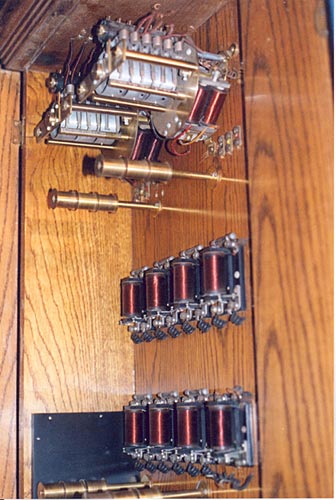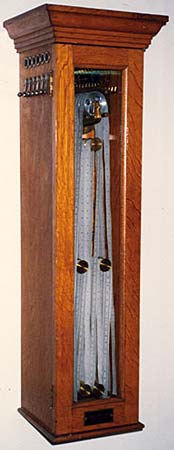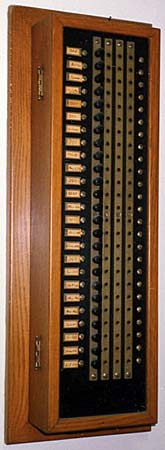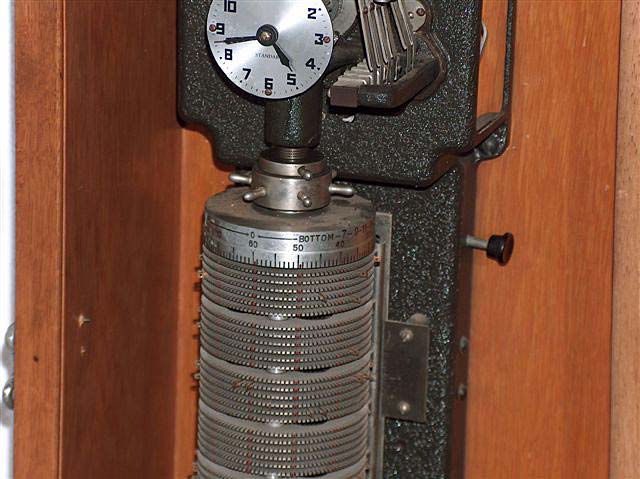


In an industrial plant the work is usually started or stopped by some audible signal, generally a whistle. To blow this whistle with unfailing precision requires an accurate timepiece, the forethought of some person, and that he should always be present long enough in advance to have his hand on the whistle valve ready to operate it when the proper time arrives.
This manual operation, therefore, requires the individual attention of a skilled and faithful operator, depends at best upon the accuracy of the clock and his observation of it, and is also subject to human failures.
With an electric whistle valve, operated by batteries and controlled by a "Standard" Program Clock, the system is automatic and is operated according to accurate time.
The program clock can be set to give a certain schedule of signals for every day, except Saturday and Sunday. For these two days the program will automatically change, if desired, to suit the working hours in force.
If the same whistle is ever needed to give signals for abnormal events, such as in case of fire, it can be operated manually, as in the old way, or direct from the Program Clock by means of a push button, without interfering in any way with the program mechanism.
There are many cases where a whistle is not used, as, for example, in stores, railroads, offices, etc. For signaling the time to begin, stop or change work, bells or gongs operated through the Program Clock are employed. This system of signals is very elastic, since it permits as many different schedules to be used in different departments, offices or buildings as may be desired. For example, the factory and office of an industrial plant may run on different schedules of hours. A bell circuit will ring signals at any points in the one entirely independent of the bell circuit in the other.
These automatic signals throughout a plant insure concerted action of the employees, since, by means of posted notices, it should be well understood that they should not stop their work or machines to wash up, get on their wraps or depart until the bell signals are given for them to do so. They know that these signals are operated automatically and will sound at the proper time, so that they need not observe their watches or clocks at frequent intervals prior to departure for fear they will be a little late in leaving. The actual time they would lose by stopping too soon would amount to a considerable loss, but far greater would be the loss due to uneasiness and the distraction from work incident to the "watch-out" habit.



~ ~ ~ ~ ~ ~ ~ ~ ~ ~ ~ ~
Jeffrey R. Wood, creator of the Standard Electric Time Co. (SETCO) pages of clockhistory.com, passed away in August of 2018. I will maintain the SETCO web pages in honor of Jeff, but will not be making any additions or changes, or answering any questions. It is hard to express how much I miss Jeff, his friendship, and his wonderful contributions to Standard Electric and Westclox research.
Bill Stoddard